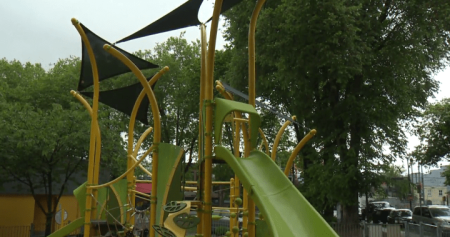A kestrel falcon that survived a B.C. wildfire last summer is preparing to return home after undergoing extensive rehabilitation at the Alberta Institute for Wildlife Conservation (AIWC). The falcon was discovered on the ground by an individual escaping wildfires in B.C.’s Shuswap region. Despite the intense heat and flames, the bird of prey only sustained burns to its flight feathers on its wings and tail. The rescuer brought the falcon to the AIWC, located just outside of Calgary, for treatment.
The AIWC provided the falcon with the specialized care it needed to recover from its injuries. The bird’s remarkable survival story captured the hearts of many, and after receiving care at the institute, she is now ready to be released back into the wild. However, before she can return home, the institute must obtain the necessary permits from the B.C. government to transport the falcon back across the province’s border. Once these permits are secured, the falcon will begin her journey back to her natural habitat, where she can once again soar through the skies.
The fact that the kestrel falcon survived such a devastating event is a testament to its resilience and the dedication of those who cared for it at the AIWC. The bird’s ability to endure the intense heat of the wildfire and recover from its injuries is truly remarkable. It serves as a reminder of the impact that wildfires can have on wildlife and the importance of rehabilitation centers like the AIWC, which provide critical care and support to animals in need.
The story of the kestrel falcon’s survival and rehabilitation highlights the ongoing challenges that wildlife face in the face of natural disasters like wildfires. As climate change continues to exacerbate the frequency and intensity of wildfires, it is crucial to have organizations like the AIWC that are dedicated to helping injured and displaced animals. By providing these animals with the care they need to recover, rehabilitation centers play a vital role in preserving and protecting wildlife populations in the face of environmental threats.
The successful rehabilitation of the kestrel falcon is a testament to the expertise and dedication of the staff at the AIWC, who worked tirelessly to ensure the bird’s recovery. Their efforts have allowed this remarkable bird of prey to overcome the odds and return to the wild where she belongs. The falcon’s story serves as a symbol of hope and resilience in the face of adversity, inspiring others to continue fighting for the well-being of wildlife and the environment.
In conclusion, the kestrel falcon’s journey from surviving a wildfire to returning home after rehabilitation at the AIWC is a heartwarming tale of survival and perseverance. It demonstrates the importance of wildlife rehabilitation centers in providing care and support to animals in need, especially in the face of natural disasters. The falcon’s story serves as a reminder of the resilience of wildlife and the dedicated individuals who work tirelessly to protect and preserve these animals in the midst of environmental challenges.















